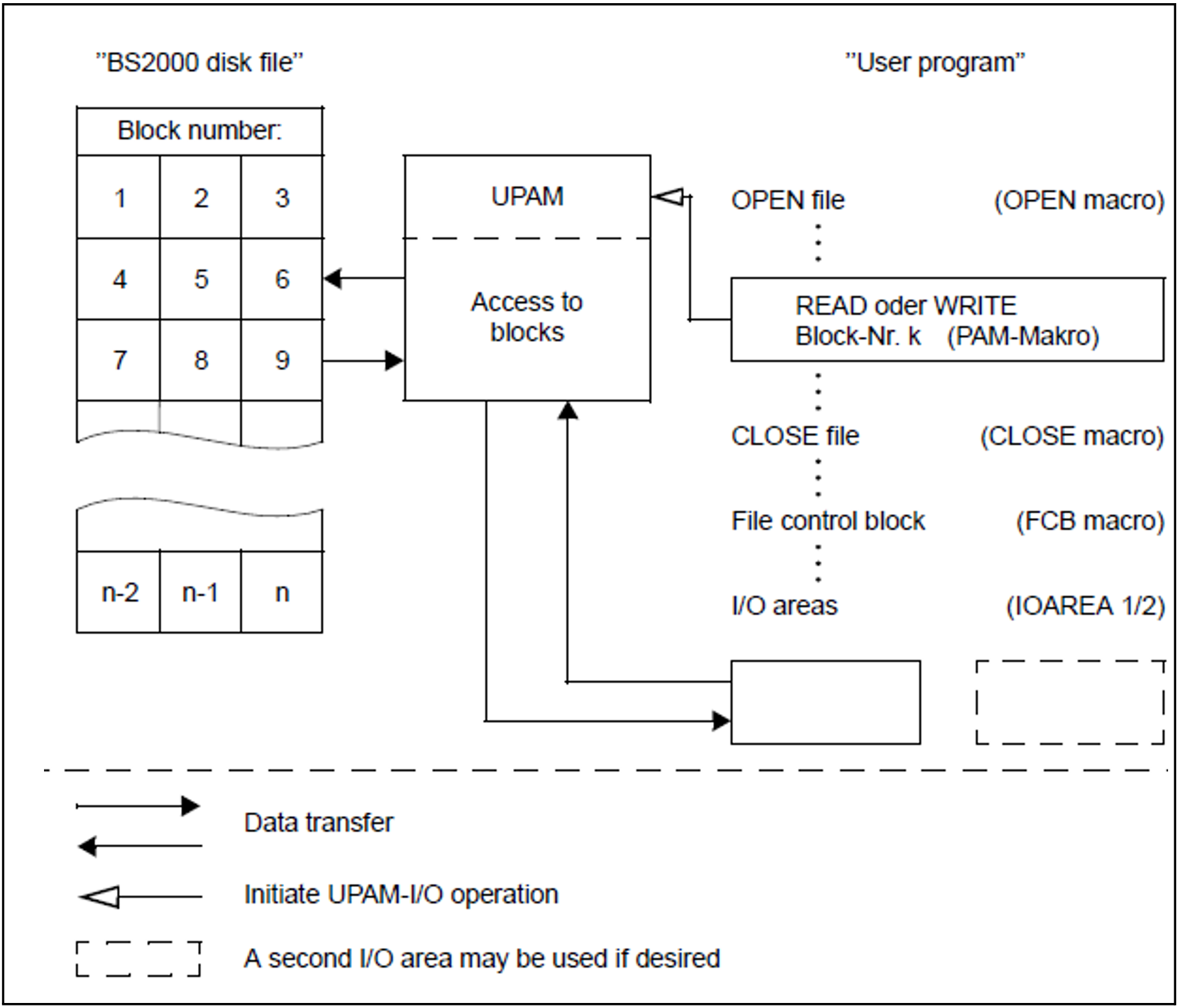UPAM is the primary, block-oriented access method in BS2000 for random access to disk files. Read or write access to any block of a file is possible at any time.
The access method UPAM is capable of processing files with different block formats (see section "Block formats for disk files", and section "Block formats for tape files"):
K-PAM files (Key PAM files) have the block format “PAMKEY”: They are characterized by the fact that DMS management information for each PAM page is kept in a separate PAM key located outside the page.
NK-PAM files (non-key PAM files), have the block format “DATA” or “NO”. With the block format “DATA”, the DMS management information is held in a block control field within the data block. No such block-specific management information is stored for the block format “NO”. NK-PAM files are classified into NK2-PAM files and NK4-PAM files. For more information on these files, see section "Block formats for disk files".
By way of the BLKCTRL operand in the macros FILE and FCB, the user can select whether a K file or an NK file is to be processed: BLKCTRL=PAMKEY defines a K-PAM file, BLKCTRL=DATA or BLKCTRL=NO specifies an NK-PAM file.
At command level, the user can use the BLOCK-CONTROL-INFO operand of the ADD-FILE-LINK command to specify whether a K or an NK file is to be processed: BLOCK-CONTROL-INFO=*PAMKEY defines a K-PAM file, BLOCK-CONTROL-INFO=*WITHIN-DATA-BLOCK or BLOCK CONTROL-INFOR=*NO defines an NK-PAM file.
If the block size is specified as BLKSIZE=(STD,n) or BUFFER-LENGTH=*STD(SIZE=n), and n is even, an NK4-PAM file is created; if n is odd, an NK2-PAM file is created. NK4 disks, by contrast, can only be used for an NK4-PAM file (see section "Disk formats").
The basis for file processing is a standard block; record structures are not supported. The (logical) data block for K-PAM files (block format BLKCTRL=PAMKEY) and NK-PAM files (block format BLKCTRL=DATA or NO) consists of one or more 2048-byte standard blocks (BLKSIZE=(STD,n)).
In both cases, multiple 2048-byte standard blocks can be combined to form a single data block (logical block) by specifying BLKSIZE=(STD,n) (with n > 1) in the FCB/FILE macro or BUFFER-LENGTH=*STD(SIZE=n) in the ADD-FILE-LINK command.
PAM files of the type node file always have the block format BLKCTRL=NO.
In the case of a K-PAM file, each standard block within the logical data block can be addressed in the program. For an NK-PAM file, it is only possible to address a complete data block (logical block) from within a program; separate processing of the individual 2048-byte blocks which make up the data block is not possible.

